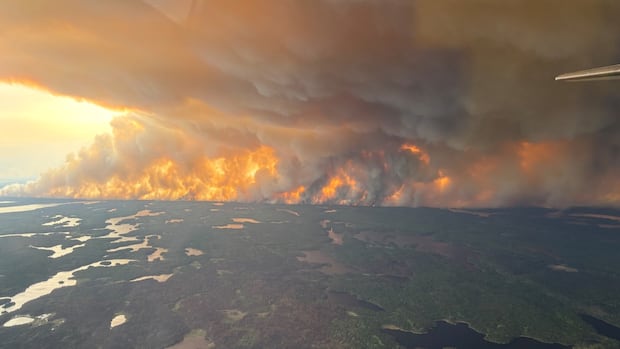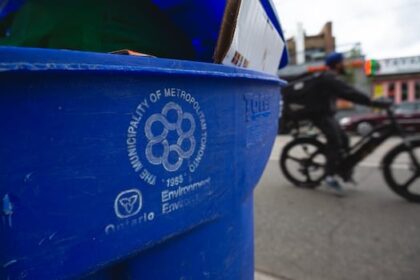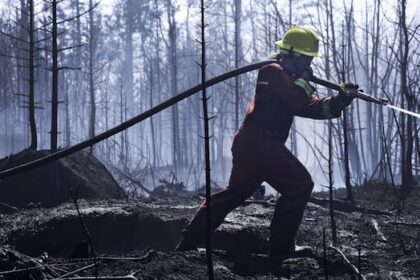SaskatchewanAs thousands of wildfire evacuees from parts of northern Saskatchewan start to return home, others are still scattered across multiple provinces, struggling to access aid and waiting for answers.Candle Lake lifts voluntary evacuation advisoryThis photo from May 27 show a fire that started in Creighton, Sask., and made its way toward Flin Flon, Man. (Government of Manitoba)As thousands of wildfire evacuees from parts of northern Saskatchewan start to return home, others are still scattered across multiple provinces, struggling to access aid and waiting for answers.Shyla Evans, who fled Creighton, Sask., with her husband late last month, is one of them. Since then, the couple has moved three times, trying to find a place to stay.”We all got evacuated from Flin Flon to The Pas because that was the only safe way out,” Evans said in an interview on CBC Saskatchewan’s The 306. “Once we got to The Pas, we had family there, but we wanted to be closer to an airport because my husband has to fly out for work.”After moving to Tisdale for two nights, they were forced to relocate again to Melfort.”This is really the first place that’s been a home for just the four of us, so we’re very thankful to be here,” Evans said.That stability has come at a cost. Evans said they’ve received no financial support from the Saskatchewan Public Safety Agency (SPSA) or the Red Cross, despite reaching out multiple times.”We are lucky enough to have gotten support from our house insurance. That is all,” she said. “We are paying out of our own pocket from the money we saved for retirement. We were hoping to retire in a few years, but I think it might take a little longer now.”WATCH | Wildfire evacuees are still having trouble finding crucial information: Wildfire evacuees are still having trouble finding crucial informationShyla Evans had to leave her home in Creighton, Sask., at the end of May and is now in Melfort. She told The 306 her family has received almost no information or government support.Evans said many others from Creighton are in much worse shape.”No one that I know from Creighton has received any funding at all from either the SPSA or the Red Cross,” she said. “People are very frustrated and afraid, and we feel alone and ignored.”She said a friend plans to contact the provincial ombudsman after spending hours on hold with no help.”There are some people with no money at all except what they came with,” Evans said. “A lot of people that I know wound up sleeping in their vehicles with their pets, because they would go to the next community and it was already full.”Evacuee who supported Moe expresses disappointmentSheri Parr, also evacuated from Creighton, shares the same frustration. She said she has been a supporter of Premier Scott Moe, but is disappointed with how he has responded.”I think Manitoba handled it hands down better than Saskatchewan,” Parr said. “[Manitoba Premier] Wab Kinew has been out to tour these places and boots on the ground.”She described a confusing and inconsistent process, where residents were bounced between agencies and told different things about how and where to get help.”We were told we couldn’t collect any kind of support in Manitoba — that we had to go to Saskatchewan,” she said. “But then you can’t collect money unless you’re there in person. It’s been crazy.”Sheri Parr, whose husband is a volunteer firefighter in Creighton, is calling for more government support for the wildfire response in Saskatchewan. (Travis Reddaway/CBC)Parr says evacuees are falling through the cracks.”It’s almost like their workers don’t even know exactly what’s going on,” she said. “There’s a lot of vulnerable people out there right now that I don’t know what they’re doing to make ends meet.”Evans echoed those concerns, noting that even community donations aren’t reaching Creighton evacuees.”There’s a different charity at our hotel every night feeding us supper, but what they don’t understand is that the funds they’re donating aren’t reaching our community at all,” she said.Both women called for better preparedness and long-term planning.”We need to look at having a national fire service,” Parr said. “There needs to be an emergency protocol in place in every one of these communities.”While grateful to be safe, Evans said she and others are bracing for a longer displacement than expected.The province is providing financial support of up to $200 per day for evacuees through the SPSA, along with $500 in financial assistance. But many say that isn’t reaching them and doesn’t cover the cost of prolonged displacement.Candle Lake lifts voluntary evacuation advisoryThe voluntary evacuation advisory for Candle Lake, Sask., was lifted Friday morning. The resort village made the call based on recent fire-behaviour assessments, SPSA data and weather forecasts.”Weather conditions confirm a marked reduced likelihood of wildfire encroaching upon the Resort Village making the Shoe Fire no longer an immediate threat,” the public notice on Candle Lake’s website said.The aftermath of a wildfire near Highway 120 north of Candle Lake, Sask. (Josh McLean/CBC)People in the area are still advised to stay alert, and have an accommodation plan and an emergency kit ready.The notice also reminded people that a provincial fire ban remains in effect, and the public is prohibited from open fires and fireworks.Candle Lake municipal operations like waste collection and administrative offices are scheduled to resume on a normal schedule starting Monday.Up-to-date info on active fires, smoke and related topics is available at these sources: Interactive Sask. active fire map. Fire danger map. Fire bans. Environment and Climate Change Canada weather alerts. Sask. Highway Hotline. Smoke forecast. Air quality. Tracking wildfires across Canada. ABOUT THE AUTHORJeffery is a reporter with CBC Saskatchewan in Regina. He previously worked at CBC Toronto as an associate producer. You can reach him at jeffery.tram@cbc.ca.With files from CBC’s The 306
‘Alone and ignored’: Sask. wildfire evacuees slam province’s response












